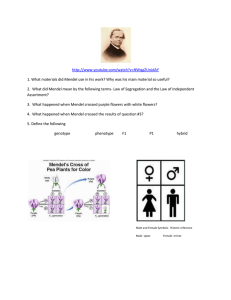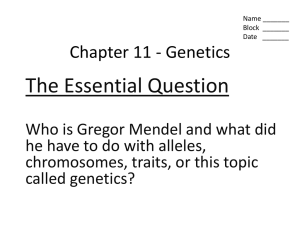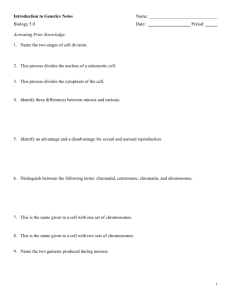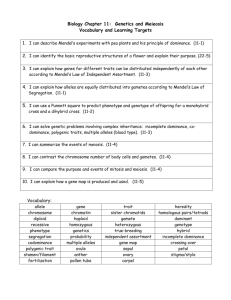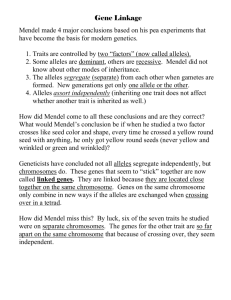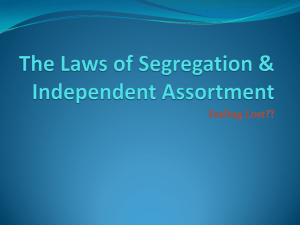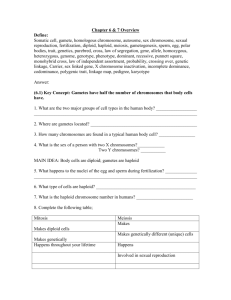Grade 11 University Biology – Unit 2 Genetics
advertisement
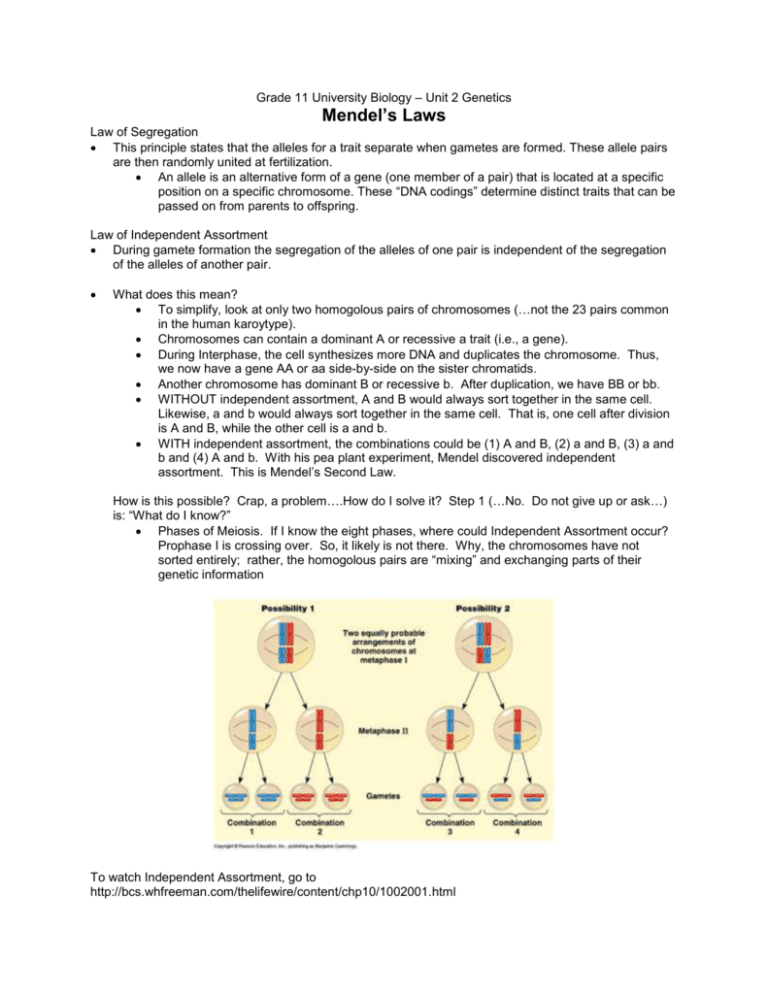
Grade 11 University Biology – Unit 2 Genetics Mendel’s Laws Law of Segregation This principle states that the alleles for a trait separate when gametes are formed. These allele pairs are then randomly united at fertilization. An allele is an alternative form of a gene (one member of a pair) that is located at a specific position on a specific chromosome. These “DNA codings” determine distinct traits that can be passed on from parents to offspring. Law of Independent Assortment During gamete formation the segregation of the alleles of one pair is independent of the segregation of the alleles of another pair. What does this mean? To simplify, look at only two homogolous pairs of chromosomes (…not the 23 pairs common in the human karoytype). Chromosomes can contain a dominant A or recessive a trait (i.e., a gene). During Interphase, the cell synthesizes more DNA and duplicates the chromosome. Thus, we now have a gene AA or aa side-by-side on the sister chromatids. Another chromosome has dominant B or recessive b. After duplication, we have BB or bb. WITHOUT independent assortment, A and B would always sort together in the same cell. Likewise, a and b would always sort together in the same cell. That is, one cell after division is A and B, while the other cell is a and b. WITH independent assortment, the combinations could be (1) A and B, (2) a and B, (3) a and b and (4) A and b. With his pea plant experiment, Mendel discovered independent assortment. This is Mendel’s Second Law. How is this possible? Crap, a problem….How do I solve it? Step 1 (…No. Do not give up or ask…) is: “What do I know?” Phases of Meiosis. If I know the eight phases, where could Independent Assortment occur? Prophase I is crossing over. So, it likely is not there. Why, the chromosomes have not sorted entirely; rather, the homogolous pairs are “mixing” and exchanging parts of their genetic information To watch Independent Assortment, go to http://bcs.whfreeman.com/thelifewire/content/chp10/1002001.html
